Tire Buying Guides
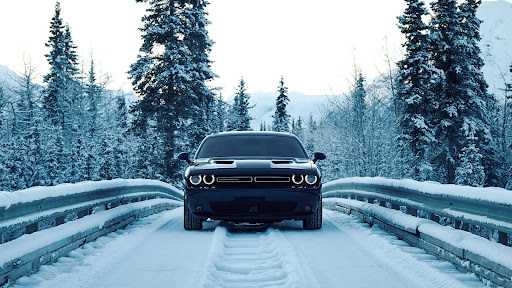
If you’ve ever tried to get through roads that are choked with several inches of snow or slush when your vehicle is rolling on a set of all-season tires, you know what a challenge that can be. Most all-season tires are just not designed to deliver the traction for braking, acceleration, and control that you need without a lot of wheelspin and sliding; it’s tricky at best and downright treacherous at worst.
Winter tires a generation ago tended to be heavy, noisy, and clumsy, with a big cleated tread that was similar to the “mud grips” that might have been on your grandpa’s pickup truck or Ford Country Squire wagon. They’ve come a long way since then, though, with the best premium winter tires delivering handling, control, ride quality, and road manners that can rival the best performance-oriented all-season or Grand Touring tires. Make no mistake, though: premium winter tires are purpose-built for dependable grip in snow and slush and have a whole set of design features that allow them to get the job done in tricky winter conditions. While they might look similar to all-season tires, they have some key differences:
- All-season or performance tires use a tread formulation that’s designed for long wear and good grip on wet or dry roads but will stiffen up and lose traction in subfreezing weather (think about the performance of a hockey puck on a slick surface vs that of a flexible winter boot). Winter tires use a special tread compound that’s blended to stay pliable in extreme cold so it can go on delivering traction. The rubber compounds also tend to be hydrophilic, attracting and retaining water to develop better friction with pavement, and winter tire formulations might be infused with silica, special polymer blends, oils, or even ground walnut shells for an extra degree of grip. The big drawback to that rubber formulation is that those softer, more flexible tires will usually wear quickly in warmer weather. Tire manufacturers advise against using winter tires if temperatures are above 40-45 degrees Fahrenheit.
- Winter tires are designed with a network of sipes, hair-thin slits that are molded into the tread to multiply the tread’s surface area and traction. Sipes were developed in the 1920s by a slaughterhouse employee named John Sipe (oddly enough); he was tired of slipping around on the slick floors where he worked and took a razor blade to cut slits into the soles of his rubber boots (another story says he was a deckhand who was having trouble on the slippery decks of ships). Sipes are usually molded deep into the tread to deliver traction as the tread depth wears down. Sipes are strategically placed across the tread and sipe design can also enhance traction on wet or dry pavement as well as keeping the tread more rigid and closing the tire’s footprint on the road.
- The tread design of winter tires is typically quite a bit different from all-season tires. Winter tires often feature a directional design, with a pattern of angled, sweeping, chevron, or “trumpet-shaped” grooves that are designed to efficiently remove water and slush from the tread’s contact patch to resist hydroplaning. Most winter tires also are designed with shoulder blocks that increase friction for improved steering response and cornering on snowy roads and an increased void ratio, which essentially means wider grooves for improved drainage of water, snow, and slush. Other winter tire designs have grooves that actually pick up and retain snow, compressing it in the grooves and developing traction through snow-to-snow friction.
- Winter tires need to be durable, and most winter tires are designed with a reinforced internal structure that could include a polyester casing, a high tensile steel belt package, a double-ply sidewall, and a nylon cap ply to hold it all together. Sometimes the cap ply can have a “high turnup”, meaning its edges are designed to reinforce the sidewall as well as subtread layers. Some winter tires are now available with a run-flat design, meaning their sidewalls are enhanced to support the entire weight of a vehicle in case of complete loss of inflation pressure. Run-flat tires can allow a driver to go up to another 50 miles at up to 50 mph, providing a real margin of peace of mind.
Winter tires will typically have the Three Peak Mountain Snowflake (3PMSF) rating for severe winter service; the 3PMSF rating is one where the tire industry sets the bar pretty high (through a testing methodology that’s far too complex to touch on here), so you can be fairly sure of a 3PMSF certified tire delivering the kind of dependable grip you need in sloppy winter conditions.
Studless vs Studdable vs Studded winter tires
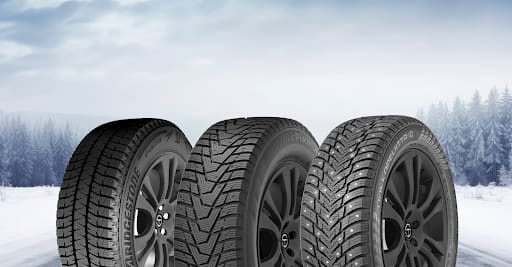
Winter tires are specifically engineered to provide superior traction and handling in cold weather conditions. Still, not all winter tires are created equal. They come in three main types, each designed to meet different driving needs and environmental challenges. Studless winter tires are the most common, offering excellent grip on snow and ice through advanced rubber compounds and tread designs that stay flexible in freezing temperatures. Studded winter tires go further by incorporating metal studs into the tread for enhanced traction on icy surfaces, making them ideal for extremely harsh winter conditions. Lastly, studdable winter tires can be called a hybrid between studless and studded winter tires and they facilitate the dual convenience of winter tires as the tread can pinned with studs to achieve traction in harsh winter conditions and can also be removed if the conditions are moderate during winter months.
Beyond the above three types of winter tires, there are performance winter tires also available and they are designed for high-performance vehicles, balancing winter traction and a performance tire's handling characteristics. Each type of winter tire is tailored to specific driving conditions, allowing drivers to choose the best option for their environment and driving style.
Studless winter tires
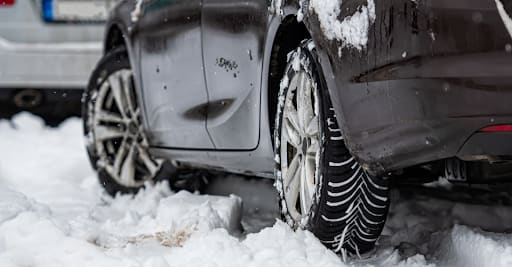
Studless winter tires are designed to provide exceptional traction in snowy and icy conditions without metal studs. These tires are crafted from specialized rubber compounds that remain flexible in freezing temperatures, allowing them to grip the road better than all-season or summer tires. The tread patterns on studless winter tires are optimized for snow and ice, featuring deep grooves and biting edges that enhance traction and prevent snow buildup. Their strengths include excellent performance on snowy roads, reduced road noise compared to studded tires, and compatibility with more areas where studded tires may be restricted. However, their weaknesses lie in their performance on sheer ice, where they may not grip as effectively as studded tires, and their tendency to wear more quickly if used in warmer temperatures or on dry pavement. Studless winter tires offer a solid balance of performance, comfort, and versatility in most winter driving conditions.
Studdable winter tires
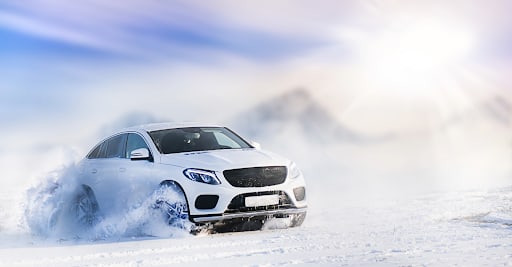
Studdable winter tires offer a versatile solution for drivers who need the option of adding metal studs for enhanced traction on icy roads but also want the flexibility to use the tires without studs. These tires are designed with pre-molded holes in the tread where studs can be inserted, allowing drivers to customize their tires based on the expected winter conditions. When studded, these tires provide improved grip on ice and hard-packed snow, similar to dedicated studded tires. However, when left un-studded, they function like traditional studless winter tires, offering good performance on snow and wet roads with less noise and smoother handling. The main strength of studdable winter tires is their adaptability, as they can be used in varying winter conditions depending on whether the studs are installed. However, their weaknesses include the need for proper installation of studs, which can be time-consuming and may require professional assistance. In addition, studdable tires, when used without studs, may not perform as well as dedicated studless or studded tires. Like studded tires, they may be subject to legal restrictions depending on the region.
Studded winter tires

Studded winter tires are designed to provide maximum traction on icy and hard-packed snow surfaces by incorporating small metal studs into the tread. These studs, typically made of tungsten carbide, protrude slightly from the tire's surface, biting into ice to enhance grip and reduce slippage. Studs come in various sizes and types, with some being retractable or removable, allowing drivers to adapt to changing conditions. The primary strength of studded tires lies in their unparalleled performance on sheer ice, making them a preferred choice in regions with extreme winter conditions. However, their weaknesses include increased road noise, potential damage to road surfaces, and reduced performance on dry or wet pavement where the studs can diminish traction. Additionally, studded tires are not legal in all areas due to the road damage they can cause, so drivers must check local regulations before using them. Despite these limitations, studded winter tires remain a crucial option for those facing the most challenging winter driving environments.
In addition to the traditional metal studs used in winter tires, there are also different types of studs designed to cater to varying driving needs and conditions. One innovative option is the retractable stud, which allows drivers to extend or retract the studs depending on road conditions. This versatility offers the best of both worlds—enhanced grip on ice when the studs are deployed and smoother, quieter driving when retracted on dry or wet roads. Another type of stud is the plastic or rubber-coated stud, which aims to reduce road damage while providing additional traction on icy surfaces. These alternatives are designed to address some common drawbacks of traditional metal studs, such as road wear and noise while offering improved safety in winter conditions. As technology advances, we may see even more variations of studded tires, each tailored to meet specific driving demands and environmental considerations, providing drivers with more options to stay safe on the road during harsh winter weather.
Studs for tires come in various sizes, each designed to meet specific performance needs and fit different tire models. The size of a stud is typically determined by its length, diameter, and the shape of the tip, all of which influence how the stud interacts with icy surfaces. Common stud sizes range from 6 to 12 millimeters, with shorter studs used for light passenger vehicles and longer studs for heavy-duty trucks or vehicles requiring extra grip. The diameter of the studs also varies, with some designed to fit snugly into pre-molded holes in the tire's tread, while others are made for installation in aftermarket situations. The shape of the stud's tip, whether rounded, conical, or flat, can affect how it penetrates ice and provides traction. It's essential to choose the correct stud size for your specific tire to ensure optimal performance and safety. Improperly sized studs can lead to uneven wear, reduced traction, or even damage to the tire itself, so consulting the tire manufacturer's guidelines or a professional installer is recommended when selecting studs.
When considering studded tires, it's important to be aware of state and county restrictions, as regulations vary widely across the United States. Some states, particularly those with harsh winter climates like Alaska and Colorado, allow the use of studded tires throughout the winter season but often set specific timeframes during which they are permitted—typically from fall to spring. Conversely, states with milder winters or concerns about road damage, such as Florida and Texas, have banned the use of studded tires entirely. In certain states like Oregon and Washington, studded tires are allowed but with limitations, such as requiring the studs to be made from lightweight materials to minimize road wear. Additionally, some counties within states may impose their own stricter rules, making it essential for drivers to check both state and local regulations before using studded tires. Failure to comply with these laws can result in fines or other penalties, so understanding the specific requirements for your area is crucial to ensure both safety and legal compliance.
Best Winter tires
1. Nokian Hakkapeliitta 10
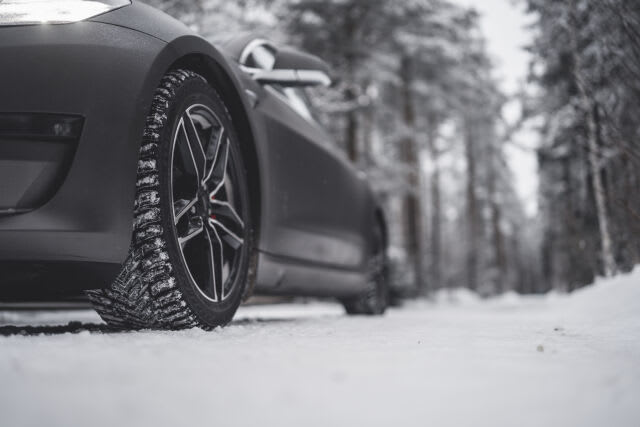
Nokian, the Finland-based tire manufacturer leads when it comes to manufacturing winter tires. With its dedicated winter tire facility, Nokian has been able to test and implement cutting-edge technologies to build the best winter tires that can withstand severe snow or icy conditions.
One of the best-rated winter tires, the Nokian Hakkapeliitta 10 is the manufacturer’s Three Peak Mountain Snowflake-certified winter tire that’s available for use in wintry conditions in studded choices, allowing the drivers to gain enhanced traction performance on ice or snow.
While the standard version of the tire is designed for use on coupes, sedans, and minivans, there are two different variants, the Hakkapeliitta 10 EV and the Hakkapeliitta 10 SUV available for use on EVs and SUVs respectively.
As we discussed above previously in this winter tire buying guide, the use of these studded tires is subject to the law and therefore, one must check their usability in the state or find out during what particular calendar period these tires could be (or could not be) used in a specific region. Likewise, these winter tires are designed for use in temperatures below 45 degrees Fahrenheit and should not be used in warmer weather conditions.
Designed to match the needs of typical northern winter conditions, the Hakkapeliitta 10 from Nokian offers superior grip, driving comfort, and the advantage of using an eco-friendly tire. The tire features Double Stud Technology wherein the studs on the center boost acceleration and braking, while the star-shaped studs on the shoulders improve grip during turning and lane changes. The Eco Stud 10 Technology used in the tire improves ice grip with reduced road wear, while the advanced rubber compound enhances grip in different weather conditions. Additionally, it sports Nokian’s proprietary, Winter Safety Indicator (WSI) to alert drivers when the tires are unsuitable for winter use.
2. Bridgestone Blizzak WS90
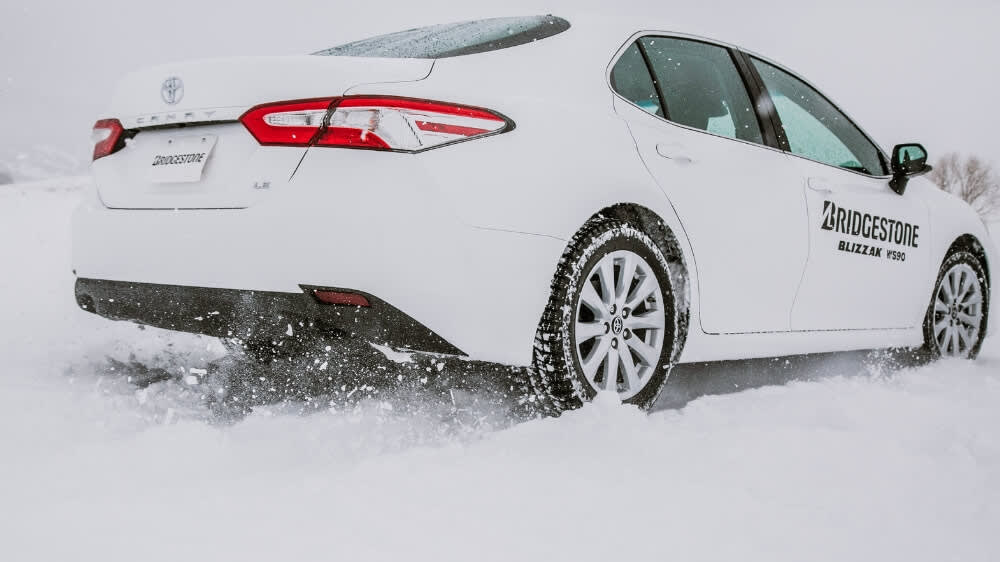
Bridgestone winter tires are designed with particular rubber compounds, distinct tread patterns, and biting edges to give the confident grip and control required in winter weather. Three Peak Mountain Snowflake certified, the Bridgestone Blizzak WS90 is one of the best-rated snow tires designed to provide excellent snow traction for sedans and minivans, and its compound keeps the tread flexible in harsh winter conditions. The highlight of this tire is that it is part of the Blizzak tires family, which is considered the ‘Gold Standard’ in the winter tire category.
While the Blizzak WS90’s advanced tread compound with a large contact area offers confident control on snow and ice, its patented multicell technology enhances traction and prevents slippage on ice. An increase in the tread block edges by 15% improves braking effectiveness in slippery and snowy conditions and with 30% increased block rigidity, the Blizzak WS90 ensures a longer tread life. However, the Bridgestone Blizzak WS90 cannot be used all year; as a winter tire, it should only be used when temperatures consistently fall below 45 degrees Fahrenheit.
3. Continental VikingContact 7
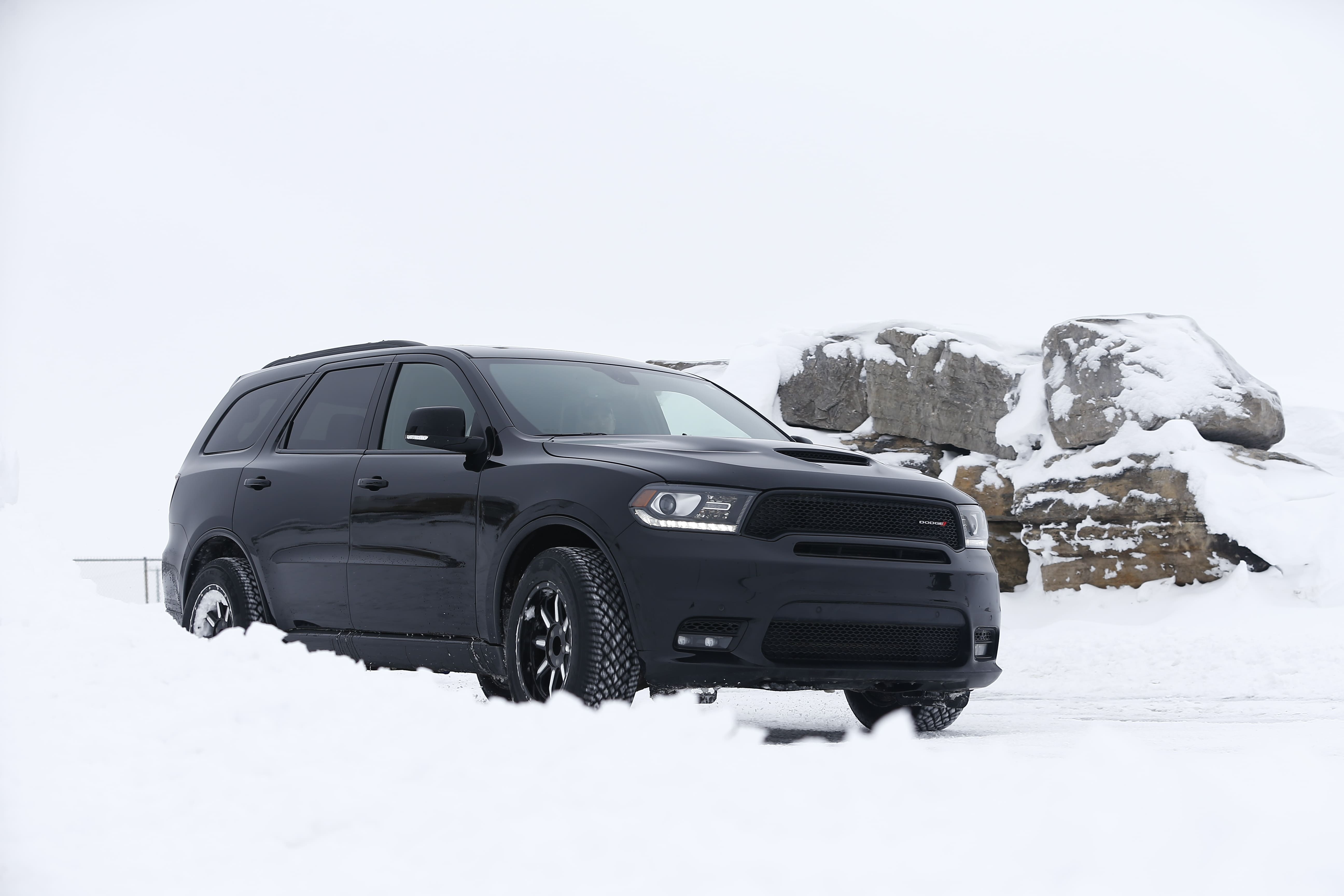
When discussing winter tires, you can’t just ignore the VikingContact 7 offered by the globally renowned premium tire manufacturer, Continental.
We all know that all-season tires generally meet most needs, but if you live in an area with moderate to severe cold conditions for 3-4 months, you'll need a set of appropriate winter tires. One such winter tire that will help you to deliver powerful traction and braking on snow- and ice-covered roads is the Continental VikingContact 7.
This promising winter tire can be used on passenger cars, CUVs, SUVs, or light trucks and offers superior grip, strong traction, and confident steering response in severe winter conditions. Like all standard winter tires, the VikingContact 7 is also Three Peak Mountain Snowflake certified, making it ideal for use in moderate to severe winter weather conditions.
The dedicated winter tread of the VikingContact 7 makes it adaptable to snowy and icy conditions, and a set of these tires should not be used when temperatures are consistently above 45 degrees Fahrenheit. Thanks to the PolarPlus Technology, the tire remains flexible tread in cold temperatures, ensuring better grip in winter conditions to offer shorter stopping distances on snow- and ice-covered roads.
4. Goodyear Winter Command
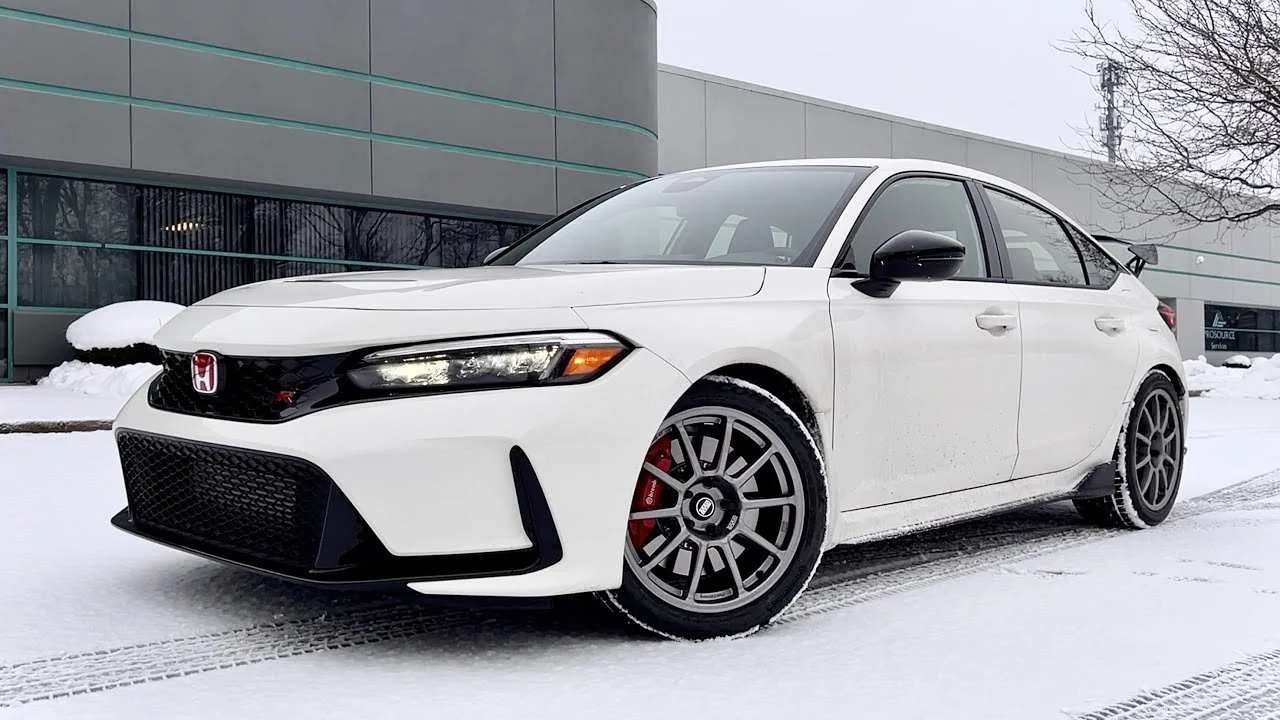
Next on the list of best winter tires comes the Winter Command, the tire from the 125-year-old iconic American brand - Goodyear.
For areas that frequently witness snowfall and have layers of icy roads, the Winter Command is an exceptional choice as it is made using deeper treads and certain rubber compounds to provide dependable traction and lower the possibility of hydroplaning and slipping. By now you would be clear with the fact that a winter tire is Three Peak Mountain Snowflake certified, and likewise is the case with the Goodyear Winter Command.
This top-class winter tire can be pinned with TSMI #12 studs for excellent traction on SUVs, cars, minivans, and light trucks, especially in deep snow (check local laws before using studs on this tire). Goodyear’s engineers have left no stone unturned to offer this tire with a unique tread pattern, which ensures maximum stopping power on icy, snowy, and slushy roads.
Goodyear Winter Command offers buyers excellent handling due to the special tread pattern that presents more biting edges for better performance. High tread depth and the top-quality rubber compound enable the tire to remain flexible in cold weather. Additionally, zigzag sipes and the rubber compound provide phenomenal traction. True to its name, the Winter Command will enable you to hold ‘command’ in the harshest cold environments.
5. Pirelli Scorpion Ice & Snow
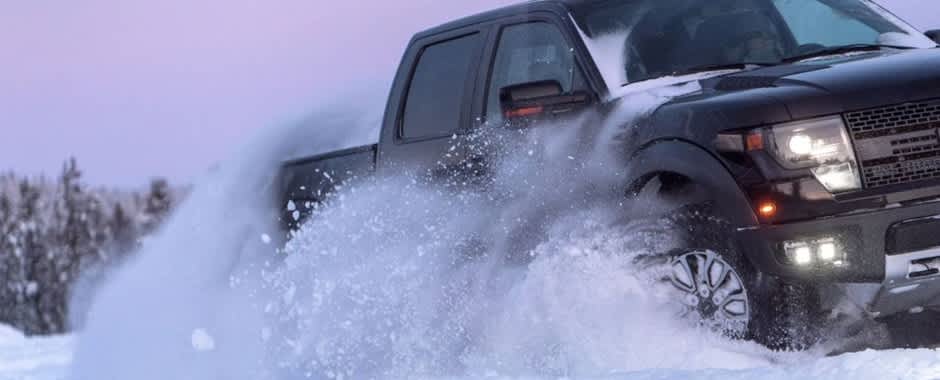
When every tire brand is competing to find a place in the best winter tire buying guide why should Pirelli stay out of it? Designed for use on CUVs and SUVs, the Pirelli Scorpion Ice & Snow is a great winter tire that features excellent grip, traction, and handling on slippery terrains.
Thanks to the asymmetric tread pattern and angled tread blocks, the Scorpion Ice & Snow offers superior control and performance in severe winter weather conditions. While the multi-edged tread blocks provide optimum snow traction and grip during downhill driving, the four longitudinal grooves clear water, slush, and snow from the tread to maintain consistent road contact and resist hydroplaning.
With a sturdy off-road carcass design, the Pirelli Scorpion Ice & Snow returns controlled handling and improved steering response. With an optimized tread design, the Pirelli winter tire reduces noise and vibration levels for a quiet and comfortable ride quality in extreme snowy and icy conditions. The Pirelli Scorpion Ice & Snow is laced with Run Flat technology that ensures you continue to drive even during complete loss of air pressure for up to 50 miles at a speed of up to 50 miles per hour.
6. Falken Winterpeak F-Ice 1
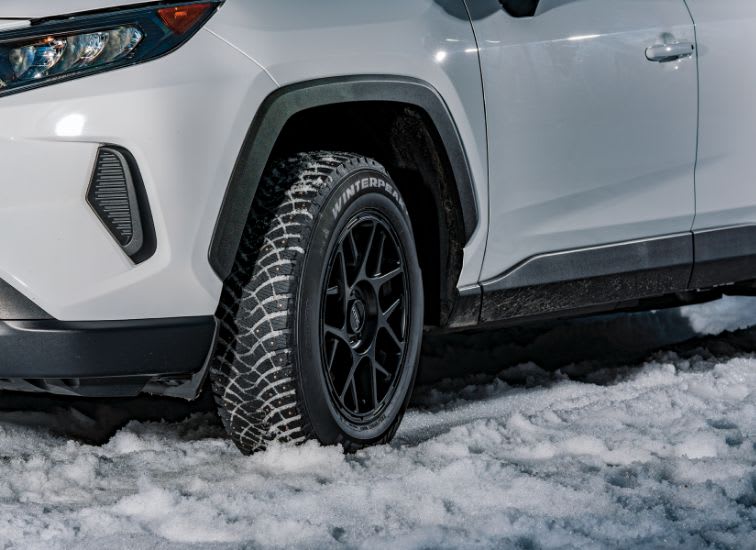
Following suit, the Falken has the Winterpeak F-Ice 1 up its sleeve that finds a place in our list of the best winter tires. Engineered to take on challenging terrains, the Falken Winterpeak F-Ice 1 is the tire maker’s first studdable winter tire that promises improved ice braking, thanks to the network of dense sipes that provide extra biting edges across the tread for improved traction and grip. While the 4D Nano Design Technology-laced rubber compound resists the coldest temperatures without compromising flexibility, the 3D Canyon Sipe Technology allows enhanced grip than regular all-season tires.
With the Three Peak Mountain Snowflake certification, the Falken Winterpeak F-Ice 1 assures superior performance in extreme winter weather conditions. It can be paired with optional TSMI #12 or #13 studs (check local laws before installing) for extra traction and control in slush, snow, and ice. While most winter tires do not come with a limited mileage warranty, the Winterpeak F-Ice 1 is backed by Falken’s road hazard protection guarantee so you are not stranded during your journeys. Designed for passenger cars, the Falken winter tire is a great option for vehicles like the Mazda 3, Subaru Impreza, Toyota Camry, and Honda Civic.
7. General Grabber Arctic and Arctic LT
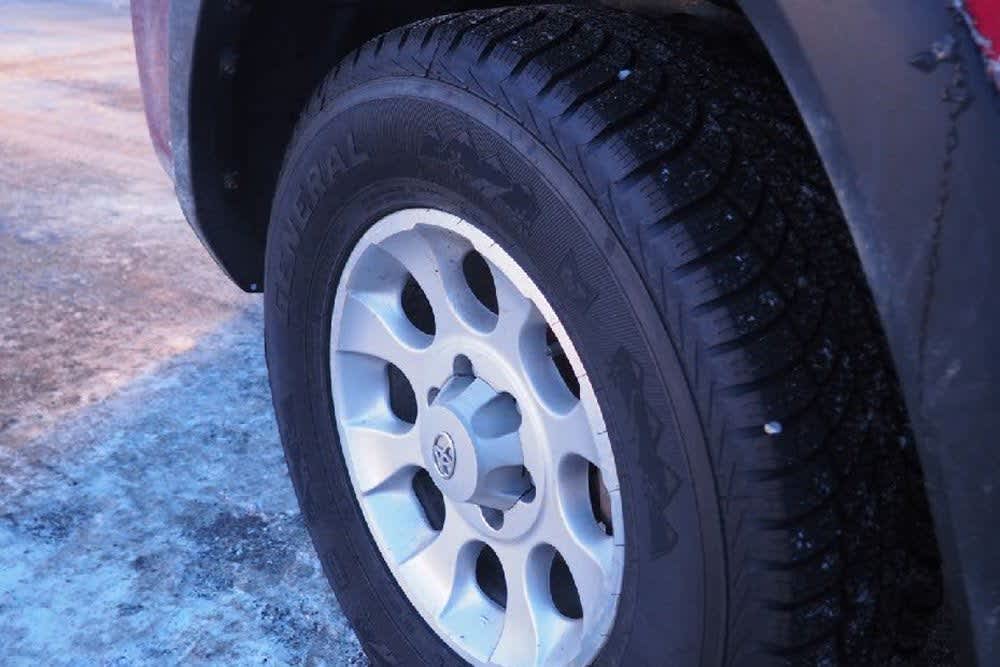
The General Grabber Arctic is a passenger tire that’s designed for extreme winter conditions. It is designed around General’s Duragen package for enhanced tire strength and durability, featuring Three Peak Mountain Snowflake certification for severe winter service.
The Grabber Arctic sports a directional tread with sweeping grooves and multidirectional 3D sipes that help multiply traction on SUVs and passenger cars. The circumferential grooves help route water away from the tire’s contact patch to resist hydroplaning, and the continuous center tread block gives the Grabber Arctic great straight-line stability, reliable braking at highway speeds, and a steering response that’s light and quick.
The Grabber Arctic is pre-drilled for easy installation of studs in cases of very heavy snow and ice (check local laws beforehand for the use of studs). Expect high stability and damage resistance as the tire features a high-strength steel belt package and nylon cap layer. Further, the Grabber Arctic’s footprint is optimized and redesigned to keep the most rubber in contact with the road.
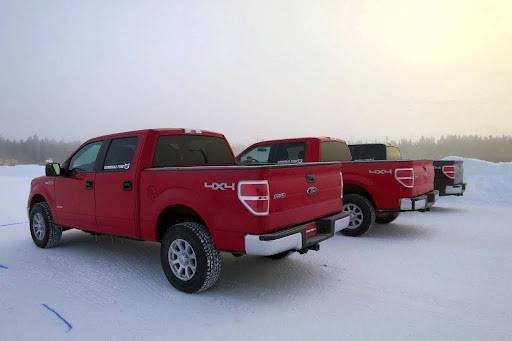
For the Grabber Arctic LT, General took the great design features and construction from the Grabber Arctic and beefed it up for the added weight, torque and power of a light truck or SUV. The Grabber Arctic LT also features Snow Traction Ridges for performance in deeper snow and extra-deep sipes that help stabilize the tread at highway speed as well as slice through snow and slush.
Much like the Grabber Arctic, the Grabber Arctic LT also features Duragen technology for higher tire strength, extended tread life, and durability. This tire receives a 10-ply rating for carrying heavy loads, and it ensures reliable braking and great straight-line stability like its sibling above. The two rows of interlocking center blocks are flanked by intermediate and shoulder blocks with buttressed edges and stepped reinforcement bars to improve handling and braking performance on dry, wet, and snowy roads.
8. Yokohama iceGUARD G075
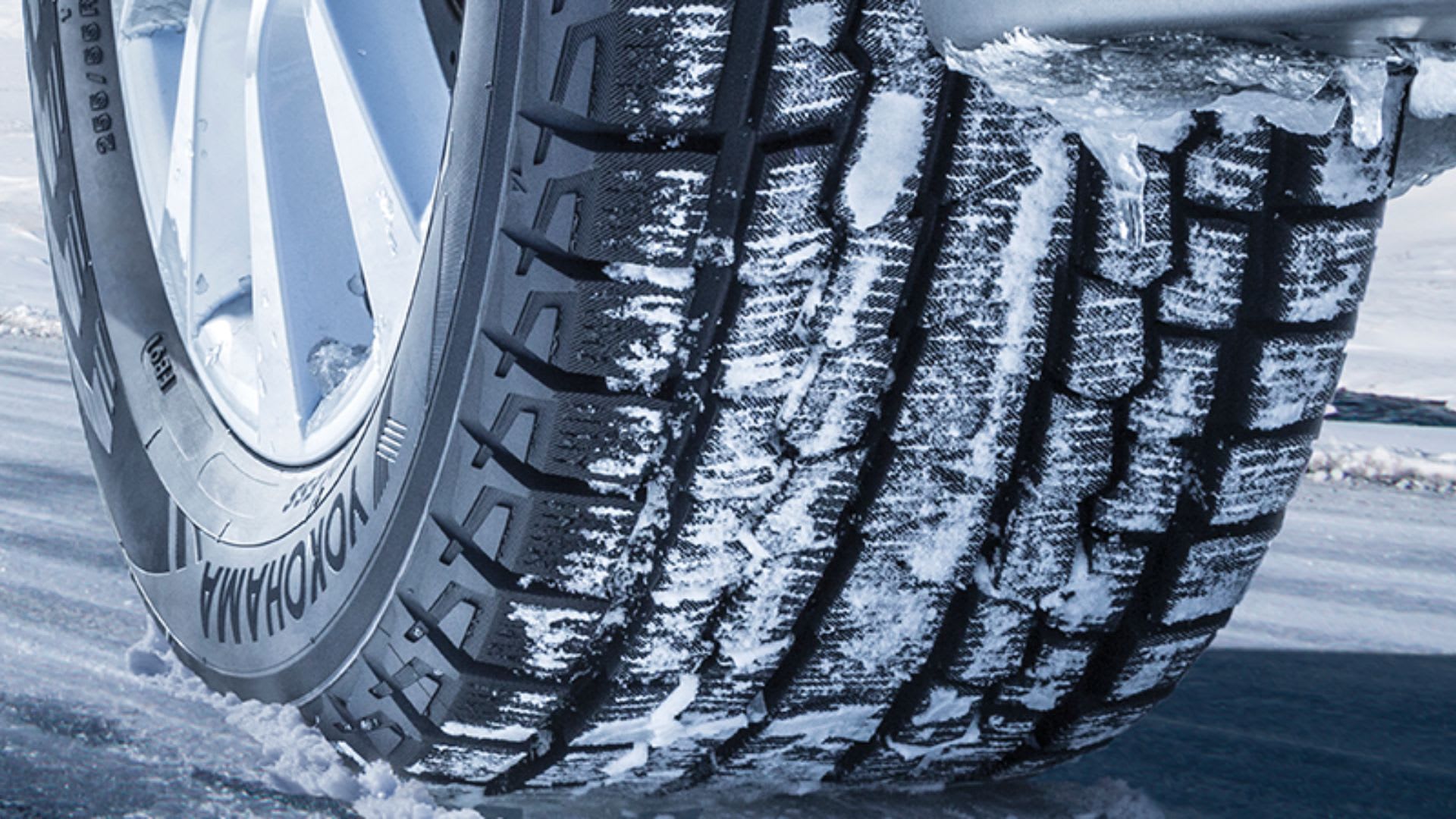
What makes this list of best winter tires more interesting is the Japanese manuferer, Yokohama’s studless winter tire the iceGUARD G075. The tire is designed for use on CUVs, SUVs, and light trucks, and features a very detailed tread pattern with minuscule siping work across the profile for better winter traction and performance.
Solid on-road durability and improved fuel efficiency make the Yokohama iceGUARD G075 much more worth using on your Chevy or Ford trucks, or anything like a Toyota Sequoia. The Three Peak Mountain Snowflake certification is a standard trait to give you enough confidence to drive on snow- or ice-covered roads.
The micro-diagonal grooves add more edges to the tread for grip on snow and ice, while the unique uni-directional tread design improves road contact for enhanced handling in varied winter weather conditions. There’s a low-heat generating under-tread compound that reduces rolling resistance and improves fuel efficiency. Likewise, the durability factor with the use of solid materials and compounds in construction offers better stability when you’re driving your CUV or SUV on a slick road.
Indeed, the tire has a lot of features to enhance the driving experience during winter. Let’s move on to the next best winter tire on this list…!
9. Hankook Winter i*Pike X (W429A) and (W429A) Studded
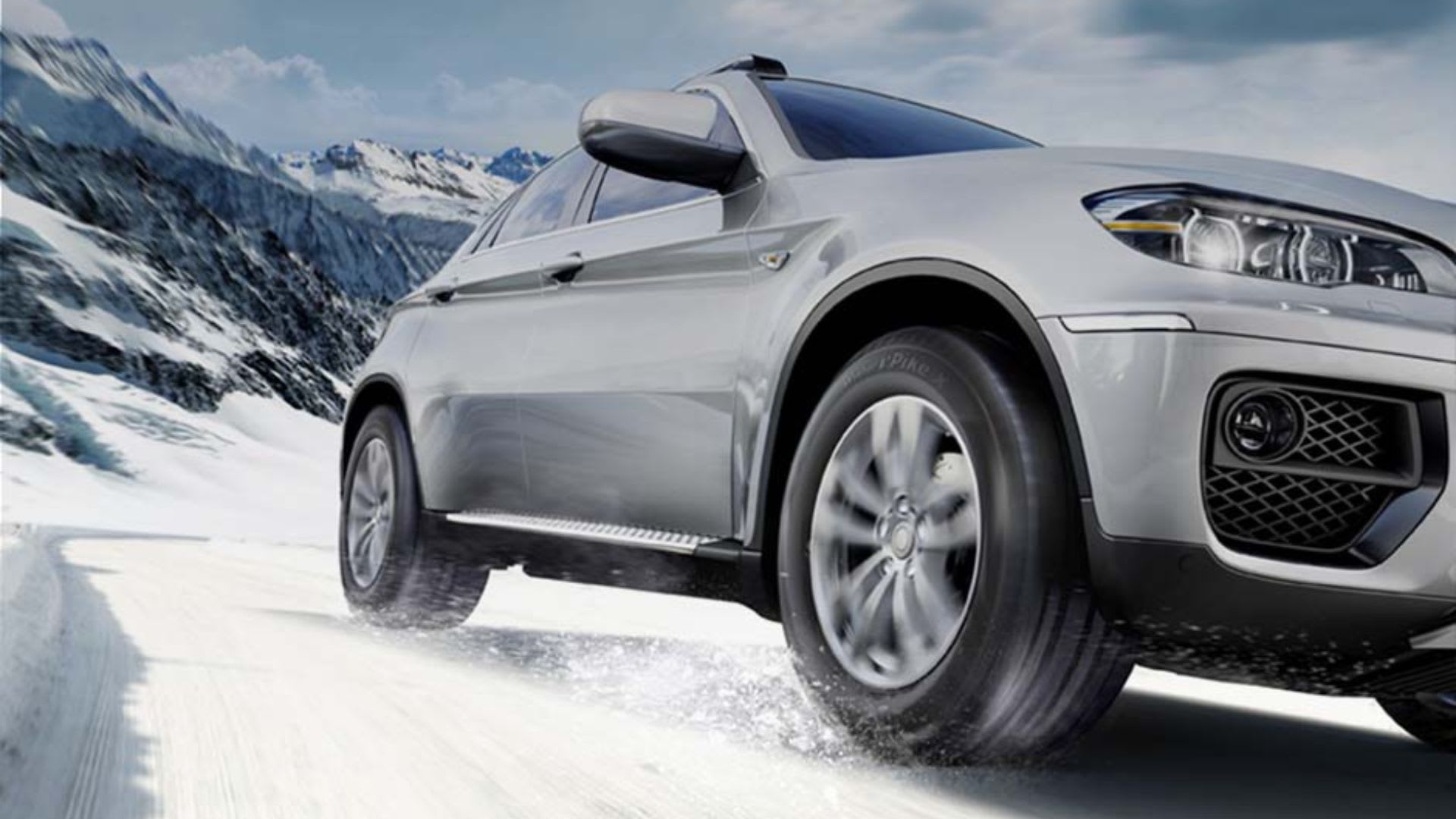
The Hankook Winter i*Pike X (W429A) is a robust, new-age winter tire specifically engineered for CUVs, SUVs, and light trucks. This studdable tire is Three Peak Mountain Snowflake certified, ensuring reliable performance in moderate to severe winter weather. The W429A model excels on icy, snowy, and wet roads, offering improved handling, and a longer tread life. Its 2-in-1 shoulder blocks, and claw edges enhance traction on slippery surfaces, while wide center blocks, and 3D sipe technology maximize grip and control. Additionally, the tire's zigzag grooves effectively channel water, slush, and melting snow away from the tread, reducing the risk of hydroplaning.
The innovative ice slit design provides superior traction on ice, and Ultra High Tensile steel belts reinforce durability and puncture resistance, contributing to the tire's longevity.
This tire can be pinned with TSMI #12 studs, where permitted by law, for extra traction in severe ice, slush, and snow. The Hankook Winter i*Pike X (W429A) can be referred to as a reliable choice for drivers seeking enhanced winter performance, long-lasting service, confident handling, and dependable traction.
10. Firestone Winterforce 2 UV

Firestone Winterforce 2 UV, a studdable winter tire, is known for enhanced ride comfort, long-lasting performance, and great traction on snow and ice. Firestone provides TSMI #11 studs for grip in deep snow (check local laws beforehand for the use of studs) and the tire is backed by a 90-Day Buy and Try Guarantee (valid when tires are bought in sets of 4 or more). While a high tread depth results in high strength and durability, a special winter tread compound remains flexible in freezing weather to generate a high amount of traction.
The vibrations and noise levels are optimally controlled due to the symmetric tread pattern and variable pitch sequencing, while the solid shoulders and detailed elements maintain the required steering responsiveness in colder months. Since these tires are often used on commercial vans and pickup trucks that haul materials over long distances, they are designed to last longer.
Best Budget Friendly winter tires
1. Nexen Winguard Winspike 3
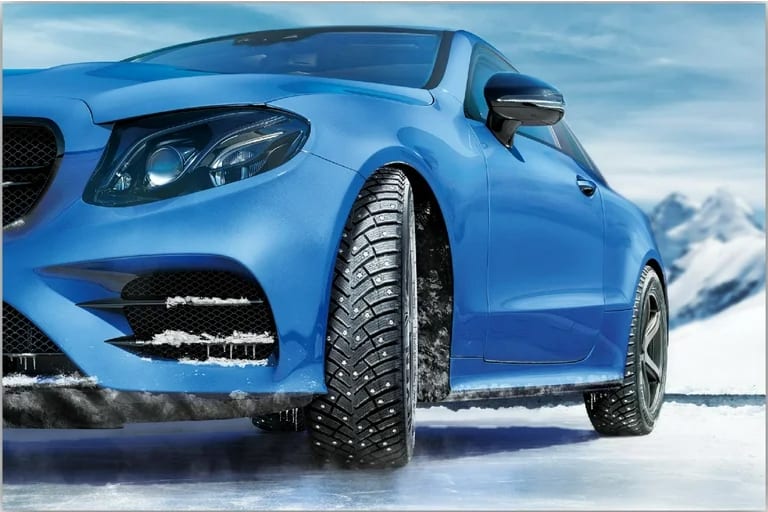
Falling under the budget and yet delivering uncompromising performance, the Nexen Winguard Winspike 3 is designed for passenger cars and features angled grooves within the tread to evacuate water and slush quickly and avoid the risk of hydroplaning while boosting wet performance.
While hundreds of sipes provide extra biting edges for surefooted snow performance, the option of installing studs TSMI #12 (check local laws before pinning) laces your vehicle for confident handling, control, and stability in slippery conditions. The innovative rubber compound sustains extreme cold temperatures without losing its flexibility, so you have better control and a safe driving experience in severe winter weather conditions.
With the directional tread pattern and strategic stud placement, the Winguard Winspike 3 delivers enhanced stability and dynamic steering response at high speeds on snow and ice. While the Three Peak Mountain Snowflake symbol assures improved snow performance, the optimized tread pattern ensures reduced noise and vibration levels, so you enjoy a comfortable and quiet driving experience. Every Nexen Winguard Winspike 3 is covered by Nexen’s 36-month roadside assistance plan for complete peace of mind.
2. Sumitomo Ice Edge
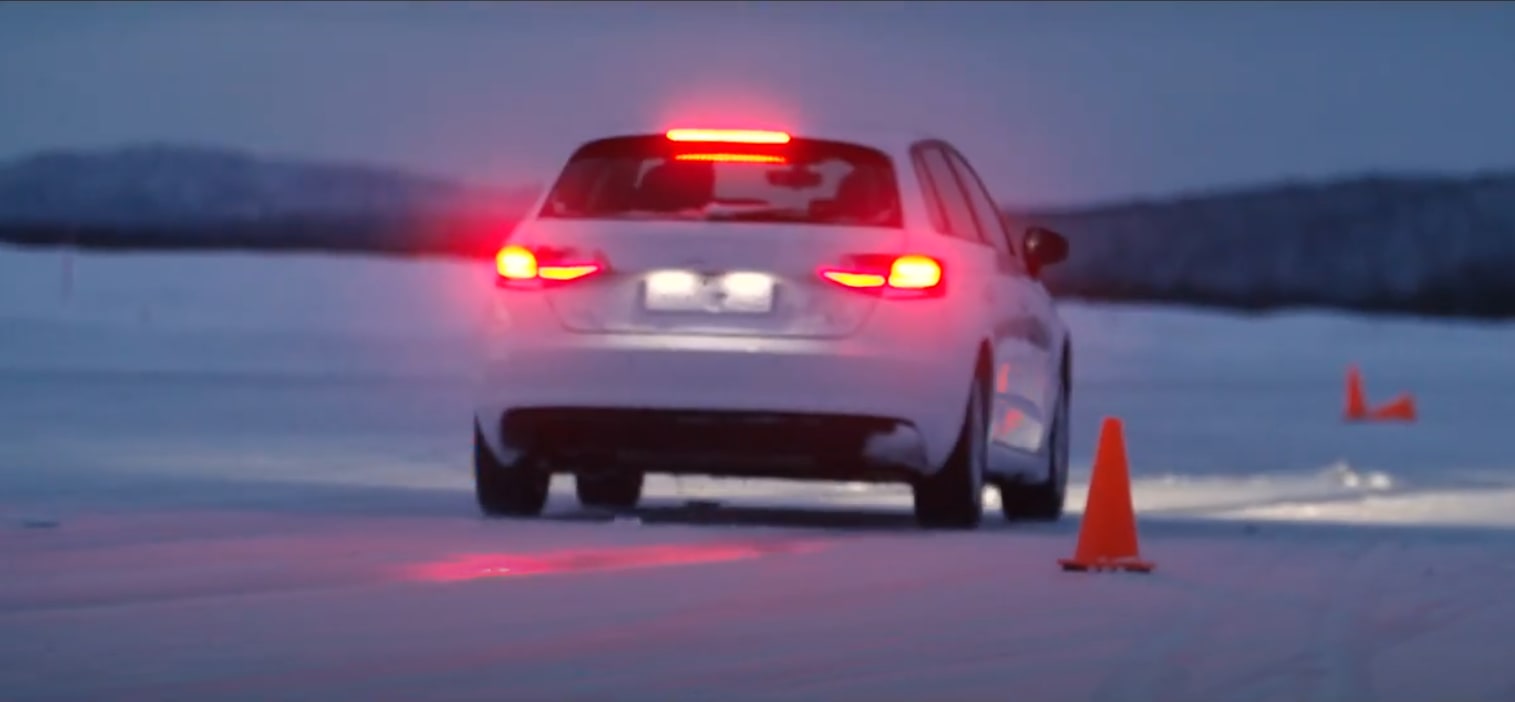
If you are looking for a budget-friendly studdable winter tire that can offer solid winter performance, consider the Sumitomo Ice Edge which gives you the edge on snow, ice, and slush-covered roads.
While Sumitomo's most advanced cutting-edge technology delivers a reliable combination of cold-weather grip, stability, handling performance, and ride comfort, its unique 3D sipe technology provides traction on snow and ice. Three Peak Mountain Snowflake certified, the versatile Ice Edge has been specially engineered to handle harsh winter weather conditions.
Its special rubber compound provides reliable performance in low temperatures, while its wide tread channels remove ice and slush from the tread, improving snow traction. Designed for use on coupes, sedans, CUVs, SUVs, and minivans, the Sumitomo Ice Edge can be pinned with TSMI #12 or #13 studs, where permitted, for additional grip on icy and snowy roads.
3. GT Radial IcePro 3, SUV 3, and 3 Studded
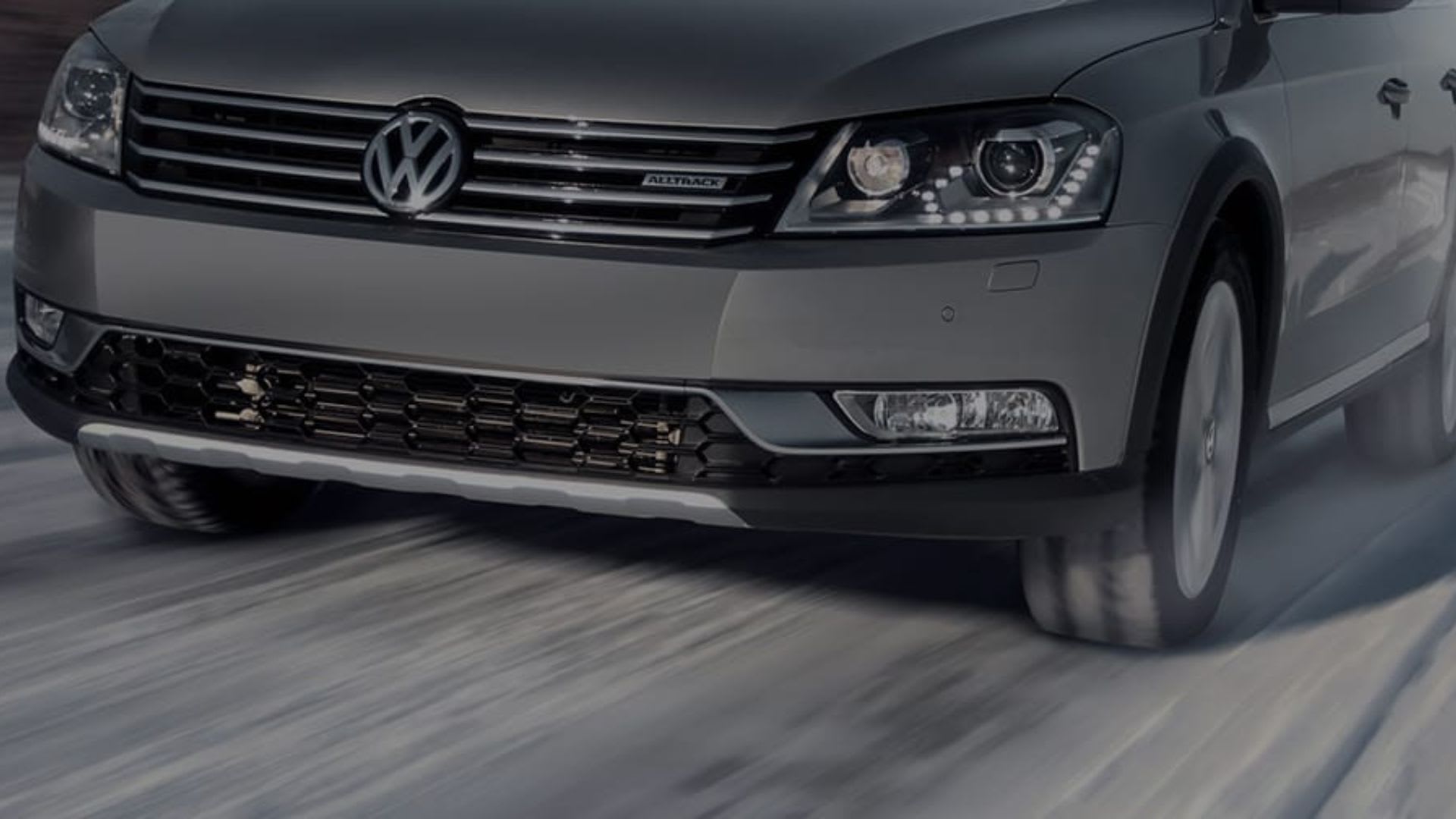
The Singapore-headquartered tire brand GT Radial is known for its affordable range of tires that offer reliable performance. You can expect the same from the GT Radial IcePro 3, which is a studdable winter tire built for use on passenger cars and CUVs, and offers confident driving in wintry conditions. The tire is optimized for enhanced comfort, reduced tread noise levels, solid winter traction with the advantage of studdable tread, and enhanced performance on wet roads during colder months.
The tire features a directional tread pattern that provides exceptional grip and traction in deep snow and also reduces road noise levels. With optimal stud distribution being on the focus by the engineers, the tire ensures improved traction and braking performance on ice when studs are used. While the wide tread grooves of this tire remove slush and ice from the contact area, the high silica compound enhances performance in low temperatures and improves mileage.
For use on SUVs and pickup trucks, the IcePro family extends further with its IcePro SUV 3 variant that sports similar capabilities and features. Likewise, to drive on deep snow with maximized grip and traction, the GT Radial offers the IcePro 3 Studded variant of the tire. You must check your local laws pertaining to the use of studs.
4. Laufenn I FIT ICE LW71 and I FIT ICE LW71 Studded
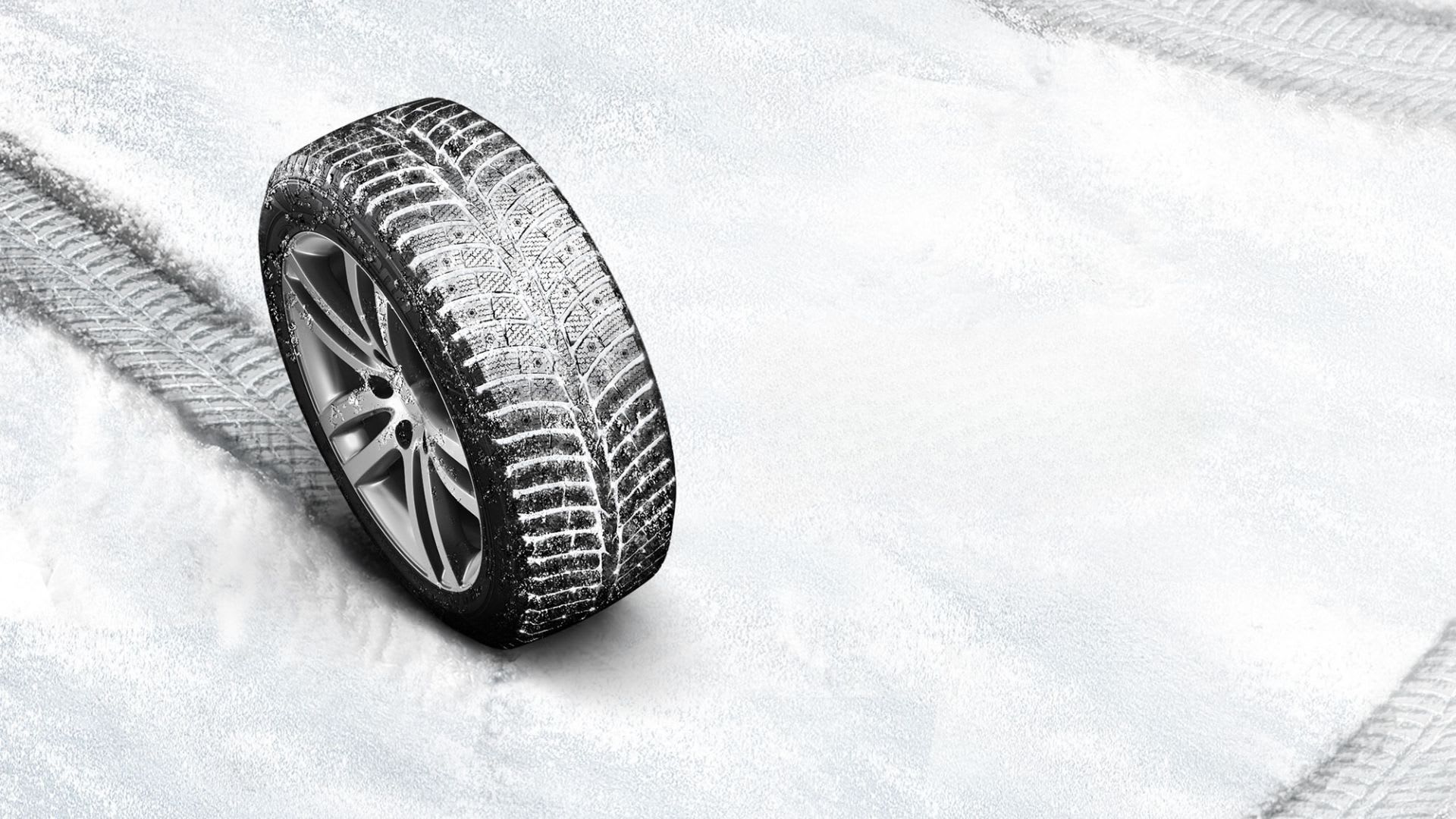
If you are looking for a budget-friendly tire that combines performance and durability, Laufenn Tires can be a good choice. The Laufenn I FIT ICE LW71 is the tire manufacturer’s studdable winter tire designed for use on passenger vehicles, CUVs, SUVs, and offer drivers enhanced winter traction, improved comfort, and better performance on ice- and snow-covered roads. The tire features a 3D Kerf wave-patterned design that enhances grip and handling performance while reducing block movement. Additionally, the snow slit design of the I FIT ICE LW71 improves steering response in snowy conditions.
The Laufenn I FIT ICE LW71 can be pinned with TSMI #12, where permitted by law, to improve traction in severe ice, slush, and snow. Alternatively, you can also take a look at the Laufenn I FIT ICE LW71 Studded, which is a studded variant of the same tire.
5. Armstrong Ski-Trac PC
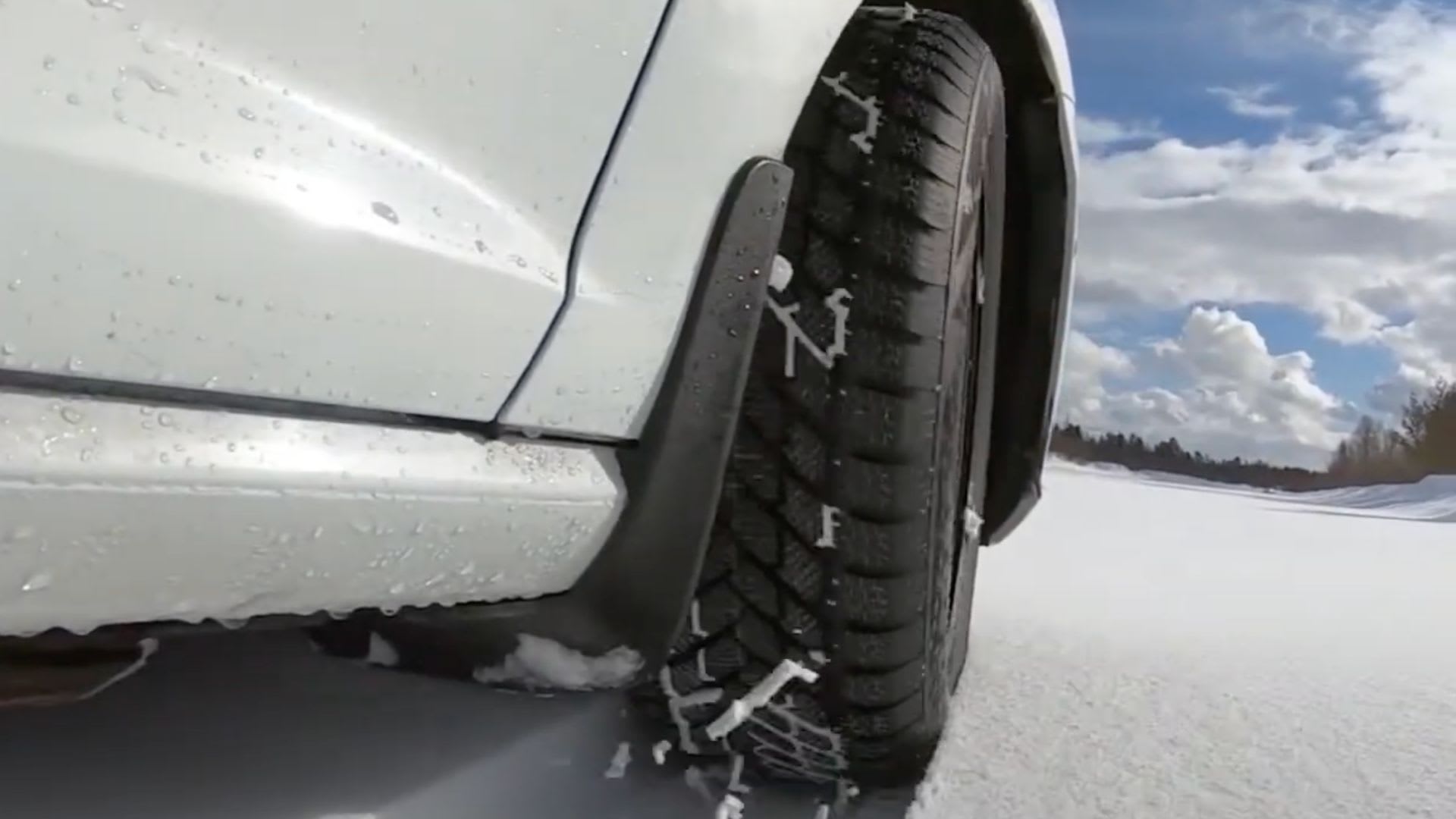
Armstrong designed the Ski-Trac PC to deliver dependable, consistent winter grip and performance for sedans, minivans, and crossovers, along with Grand Touring levels of comfort, low noise, handling, and road manners. The Ski-Trac PC features a directional winter tread with a series of intersecting V-shaped grooves, circumferential grooves, and lateral notches to efficiently route standing water away from the tire’s contact patch to resist hydroplaning. The Ski-Trac PC’s pliable winter tread compound and deep 3D sipes round out the package for winter traction, and the reinforced internal construction gives the tire the rigidity it needs for excellent highway-speed stability and predictable, crisp handling.
The unique polymer compound of the Ski-Trac PC’s tread keeps it soft and pliable in subfreezing weather, but like all winter tires, the Ski-Trac PC will wear quickly on warmer days and should not be used if temperatures are below 40-45 degrees F. The tread pitch of the Ski-Trac PC is computer-tuned to eliminate certain frequencies and harmonics to keep road noise low, and its shoulder and internal design helps to provide a quiet and cushy ride on the highway.
SimpleTire’s view on Winter tires
SimpleTire recognizes winter tires' critical role in ensuring confident driving during the harshest months of the year. The winter tire market has evolved, offering specialized options catering to varying winter conditions. Traditional winter tires, marked with the M+S (Mud and Snow) symbol, offer basic traction in mild winter conditions. However, for severe winter weather, tires featuring the 3PMS (Three Peak Mountain Snowflake) symbol are essential, as they meet rigorous standards for performance on snow and ice. These tires often include advanced features like Ice Grip technology, which enhances traction on icy surfaces. The development of all-weather tires has been an innovative response to the need for year-round versatility, combining the winter performance of 3PMS tires with the convenience of all-season usage. While these tires are a good compromise, dedicated winter tires outperform them in extreme conditions.
The winter tire market is continually advancing with testing and innovation. Tire manufacturers conduct stringent testing in Arctic conditions to push the boundaries of what winter tires can achieve. These tests ensure that tire products offer excellent snow and ice performance with improved durability and longevity. As winter tires continue to evolve, SimpleTire emphasizes the importance of choosing the right tire for your specific driving needs. While all-weather options are convenient, dedicated winter tires remain the gold standard for the most demanding winter conditions.
FAQs:
Do you actually need winter tires?
Determining whether you really need winter tires is pretty crucial to any buying decision. While winter tires give you a decisive advantage in difficult winter driving conditions and ensure a margin of safety and confidence that would be hard to find otherwise. However, it’s important to remember that they are seasonal and can’t be used in warmer weather. Some all-season tires are Three Peak Mountain Snowflake rated for severe winter service, although their winter performance is likely to not be up to what you’d expect from winter tires. Still, a 3PMSF-rated all-season tire doesn’t come with the hassle of dismounting and storing them until next winter, so there are pluses and minuses.
All-weather tires are a new-ish category in the tire world; you can essentially think of an all-weather tire as an all-season tire that’s been designed with a tread compound and tread pattern that is optimized for winter service. All-weather tires share a lot of their design elements with all-season tires, but they also feature a more aggressive tread pattern and groove network with a denser pattern of sipes for an edge in winter traction. Lots of drivers find all-weather tires to do just fine in hard winter conditions, and many all-weather tires are 3PMSF-rated as well.
For light truck tires, many all-terrain tires perform well in snow, but that doesn’t mean all of them; some all-terrain tires will stiffen up and lose traction in cold weather and have a tread and groove design that can just get clogged with snow and lose grip. Other all-terrain tires are designed for the versatility needed for winter traction, with enhanced sipe patterns and a pre-drilled set of holes for the installation of studs. These all-terrain tires will generally have the 3PMSF rating for severe winter service, so make your decision carefully.
Mud-terrain tires, on the other hand, are often not that great when it comes to winter performance. Their aggressive tread, chunky tread blocks, deep grooves, and big lugs look impressive but are designed for durability and grip in mud, sand, and rocks rather than packed snow. In addition, many mud-terrain tires don’t have the sipe design and biting edges to really perform in snow or slush, and while it seems counterintuitive, the added width and surface area of the tread of mud-terrain tires tends to detract from winter performance.
The bottom line here is this: while winter tires have their drawbacks in that they’re not suitable for year-round use, there’s also no substitute for dedicated, 3PMSF-rated winter tires when there’s deep snow on the roads that linger for days or weeks on end.
Do you need snow chains?
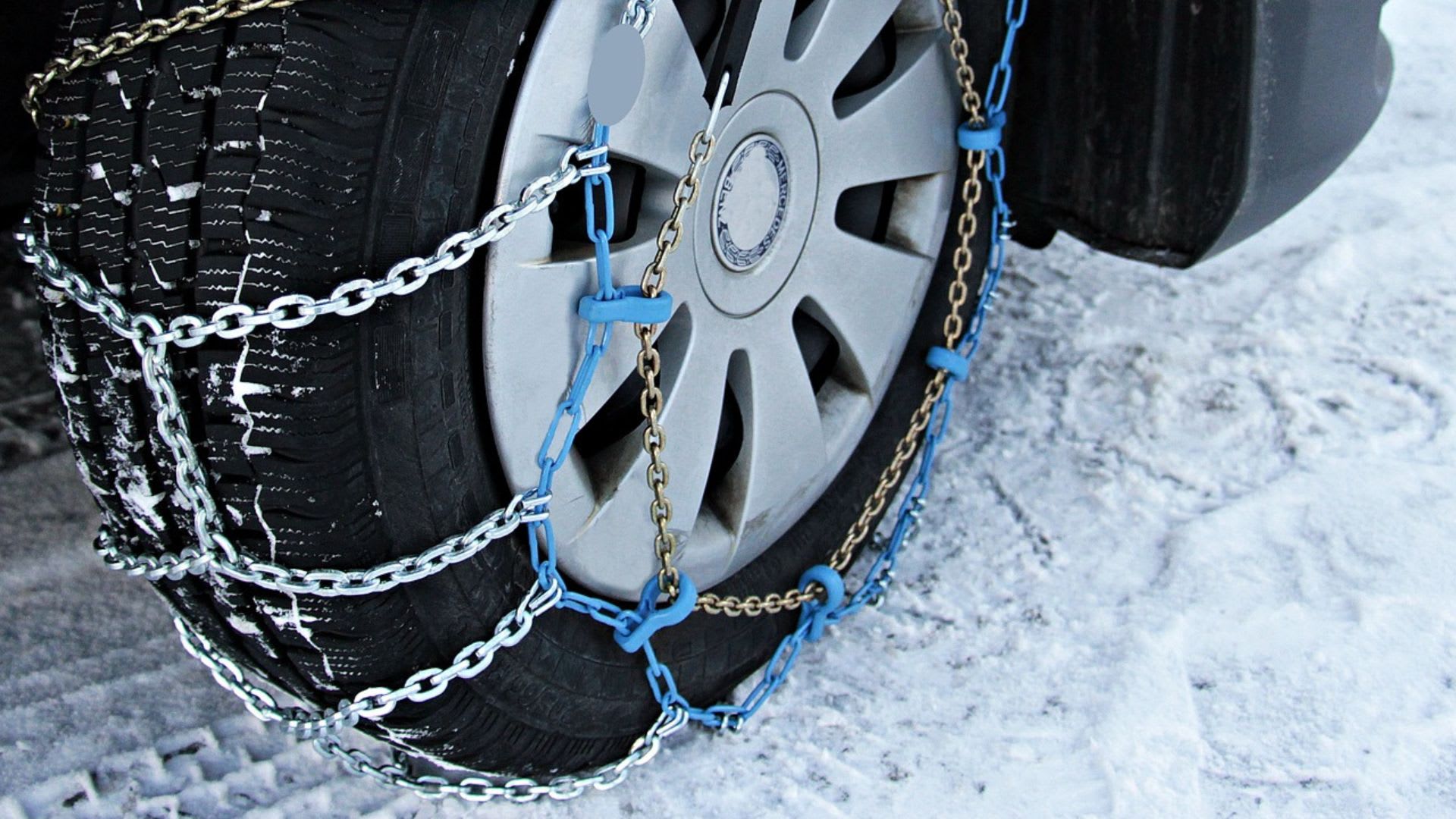
Snow chains are a pretty ingenious idea and have actually been around for well over 100 years. With snow chains fitted to your tires, the “chains” (not necessarily made from a chain) are divided into segments that wrap around your tires and sidewalls; their metal links are designed to dig into snow and slush for a degree of traction that the tire’s tread just can’t manage. Snow chains are mounted to the vehicle’s drive wheels, but should probably be used on all four wheels for proper control. Snow chains are pretty effective for the most severe winter conditions, but they do come with some notable drawbacks:
- Top speed with snow chains should only be about 30 mph
- Snow chains aren’t legal in many areas
- Snow chains can be tricky to install and can fail from not being properly tightened, or from being overtightened (some chains have automatic tensioners and can be damaged by using other tensioners)
- A snow chain that fails and breaks can whip the inside of the wheel well and fender or can wrap around the axle, or possibly even sever a brake line
- Snow chains can interfere with your vehicle’s electronic stability control or ABS braking
Another alternative is “snow socks,” a tough woven fabric that covers the entire wheel and tire for improved grip. While snow socks also require speeds under 30 mph or so, they have the advantage of being easier to install and remove, with an elastic band that holds them on just like a pair of underwear or socks. They’re also less noisy and won’t interfere with ABS and ESC systems, but the traction they offer might not be as sure as snow chains.
Can I use studded winter tires everywhere?
When an ice storm comes in and leaves your roads slicker than a hockey rink, the best solution would be to stay home, stay safe, stay warm, and not drive anywhere at all. That’s not always an option, of course, and that’s when studded tires are about the only thing to get the job done. Just like crampons on a mountain climber’s boots, the tungsten or stainless studs of studded tires will dig into even a couple of inches of ice to claw your way through the trickiest driving conditions.
Studded tires have two huge drawbacks, though: they’re noisy (as you can imagine) and more importantly, they chew up paved surfaces. Please see the information below to know the stud usage in your area:
Permitted:
- Colorado
- Kentucky
- New Hampshire
- North and South Carolina
- Vermont
- Wyoming
Not Permitted:
- Florida
- Louisiana
- Michigan
- Mississippi
- Texas
Allowed for a specific time:
- Alabama: Allowed when required for safety
- Alaska: North of 60° Latitude - Permitted September 16th - April 30th South of 60° Latitude - Permitted October 1st - April 14th
- Arizona: From October 1st - May 1st
- Arkansas: From November 15th - April 15th
- California: From November 1st - April 30th
- Connecticut: From November 15th - April 30th
- Delaware: From October 15th - April 15th
- Georgia: Allowed when required for safety
- Hawaii: Studded tires are not permitted except on either the Mauna Kea access road above Hale Pohaku or on any other road within the Mauna Kea Science Reserve leased to the University of Hawaii
- Idaho: From October 1st - April 30th Fire departments are exempt
- Illinois: Studded tires are not permitted Rural mail carriers and persons with disabilities living in unincorporated areas may use studs from November 15th - April 1st
- Indiana: From October 1st - May 1st
- Iowa: From November 1st - April 1st
- Kansas: From November 1st - April 1st
- Maine: From October 2nd - April 30th
- Maryland: From November 1st - March 31st for vehicles registered in Allegany County, Carroll County, Frederick County, Garrett County, or Washington County only
- Massachusetts: From November 2nd - April 30th
- Minnesota: Studded tires are not permitted Rural mail carriers may use studded tires under certain conditions from November 1st - April 15th
- Missouri: From November 2nd - March 31st
- Montana: From October 1st - May 31st
- Nebraska: From November 1st - April 1st
- Nevada: From October 1st - April 30th
- New Jersey: From November 15th - April 1st
- New Mexico: Allowed when required for safety
- New York: From October 16th - April 30th
- North Dakota: From October 15th - April 15th School buses are exempt
- Ohio: From November 1st - April 15th
- Oklahoma: From November 1st - April 1st
- Oregon: From November 1st - March 31st
- Pennsylvania: From November 1st - April 15th
- Rhode Island: From November 15th - April 1st
- South Dakota: From October 1st - April 30th School buses and municipal fire vehicles are exempt
- Tennessee: From October 1st - April 15th
- Utah: From October 15th - March 31st
- Virginia: From October 15th - April 15th
- Washington: From November 1st - March 31st
- West Virginia: From November 1st - April 15th only on tires operated at 40 psi or below
- Wisconsin: Emergency vehicles, school buses, and vehicles used to deliver mail are exempt. Vehicles with out-of-state registrations are exempt only if such automobiles are in the course of passing through the state for not more than 30 days
Like with many other laws and regulations, the legality of studded tires in the US is too much of a crazy quilt to really go into here. If you’re thinking that studded (or studdable) tires are what you need, we strongly advise taking a good look at the laws where you live before you spring for them.
How do I store my regular (or snow) tires when they’re not in use?
Like we discussed earlier, it’s important that you not use your winter tires in warmer weather. That lack of year-round versatility is one of their chief drawbacks, but the good news is that storage of winter tires (or any tires) is pretty easy.
Just remember that UV rays are the enemy of any tire; even a set of tires with low miles can start to develop age cracking from too much weathering and exposure to UV. Along the same lines, ozone that’s emitted around electrical fields (such as motors) can degrade a tire’s rubber compound. The best way to store your tires safely is to dismount them from the rims and seal them inside opaque bags; special tire storage bags are available for this, or you can use ordinary heavy-duty trash bags that are sealed tightly. You need to remove air from the bag, as air, especially in a confined space like a bag, allows for the evaporation of oils within the rubber compound. Stack them on top of each other in a corner of the garage, away from sunlight and ozone, and they should be fine until you need them again next season.
How to maintain winter tires
Maintenance of winter tires isn’t a whole lot from the usual set of tire maintenance tips you’d observe with all-season tires:
- Check your inflation at least once a month, and always check when the tires are cold since air expands with heat. Don’t go by the inflation that’s stamped on the tire’s sidewall – look in the dealer literature that came with your winter tires to be sure (don’t use the placard on the door jamb of your vehicle because that inflation info could be for the OEM all-season tires and not winter tires)
- To ensure even wear patterns, have your tires rotated every 5000 miles
- Keep an eye out for signs of uneven wear or alignment problems, especially along the inner or outer shoulder of the tire
- If you notice any vibration or shimmy while driving, have a tire shop check the balance of the tires. Although they should balance them properly when the tires are mounted and installed
- Inspect your tires regularly for uneven wear (including a jagged or feathered edge to the tread blocks), damage, bulges, or debris such as glass, wire, nails, or rocks stuck in the tread
How to install winter tires
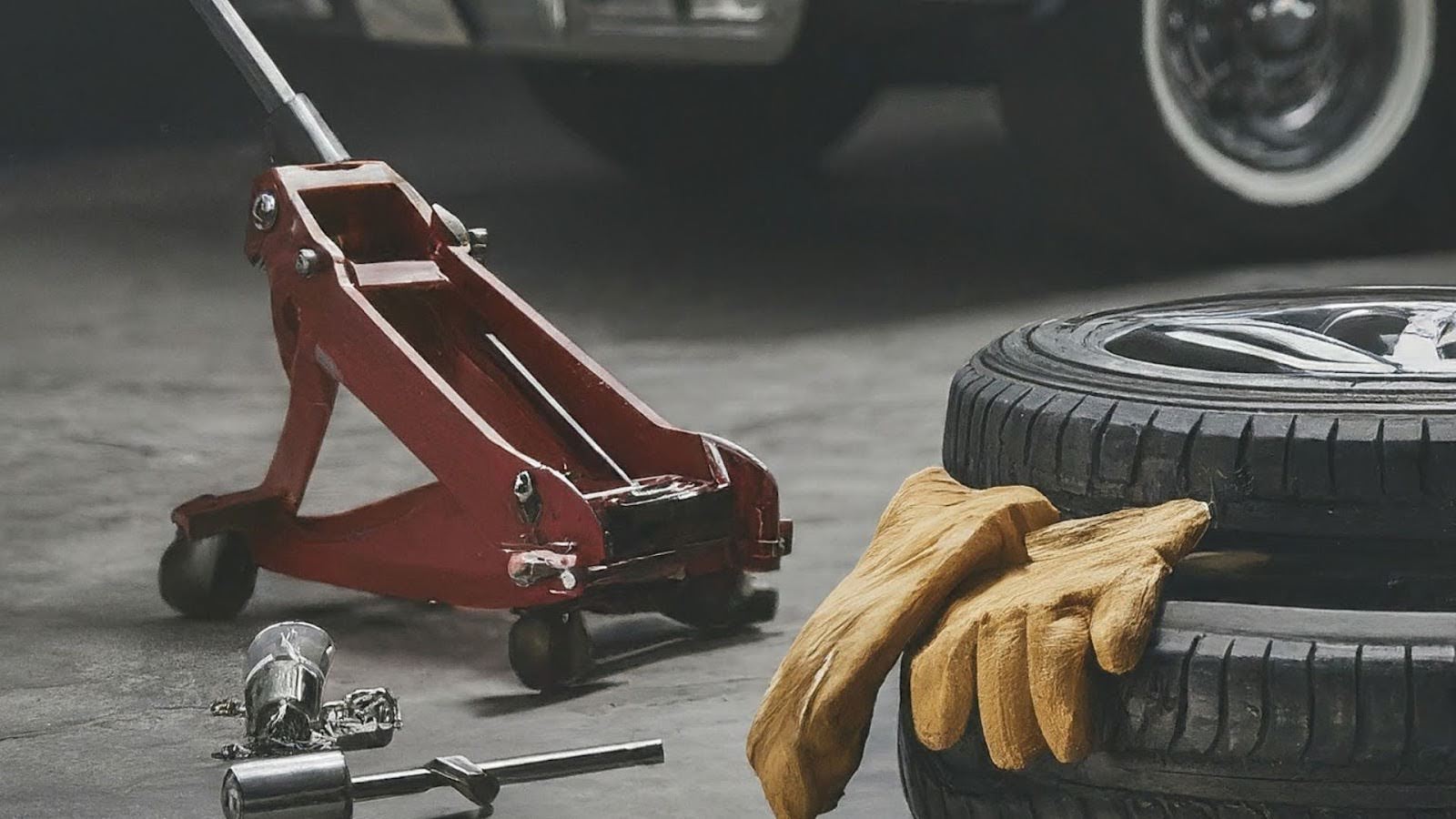
Although most drivers don’t have the equipment to actually mount winter tires to the rims themselves, it’s not hard to install the tires and rims. Here is a step-by-step DIY guide to ensure that you don’t have to visit a workshop and can fit the above in a DIY fashion within no time:
- Ensure you have all the tools you need, including a lug wrench, floor jack, gloves, eye protection, and impact wrench (if needed)
- Jack up the vehicle and set it safely on jack stands – never rely on the jack itself to support a vehicle’s weight, and check your vehicle’s owner’s manual for proper jack points if necessary
- Loosen all the lug nuts while the vehicle is still on the ground, but don’t remove them yet
- Using the jack, lift the vehicle off the ground enough to safely remove the wheels
- Install the winter tires two at a time and tighten the lug nuts hand-tight
- After lowering the vehicle off of the jack stands, tighten the lug nuts the rest of the way using a lug wrench or impact wrench
- After driving 50-100 miles, check the torque of the lug nuts again and re-tighten if needed
Some of the professional tips to keep your winter tires in good condition include:
- More frequent tire pressure checks in the winter months
- Switch to winter tires in late fall and revert to regular tires in spring once the weather improves (winter tires perform well at temperatures below 45 degrees Fahrenheit)
- Based on the severity of winter conditions in your area, choose proper winter tires
- Look for a winter tire with a tread compound that remains flexible at cold temperatures
- Ensure regular maintenance
Ready to find the perfect tires?
Search By

